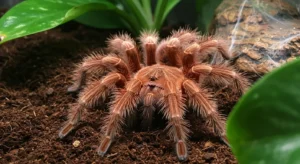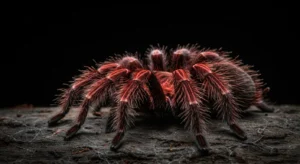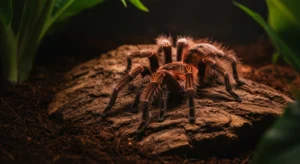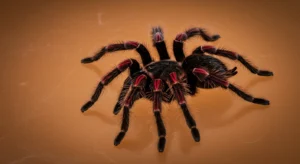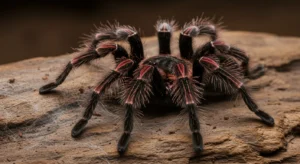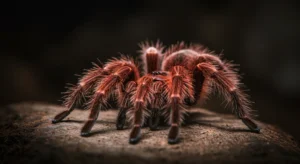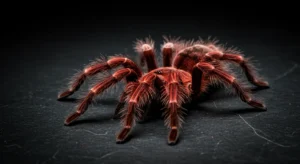The Social Life of Chilean Rose Tarantulas: Are They Solitary or Social Creatures?
Introduction: Solitary by Nature
One common question from aspiring tarantula keepers is whether these fascinating arachnids can be housed together or if they possess any form of social structure. For the vast majority of tarantula species, including the Chilean Rose (*Grammostola rosea*), the answer is clear: they are **fundamentally solitary creatures**.
Understanding their natural inclination towards solitude is crucial for responsible husbandry and avoiding potentially fatal mistakes.
Why Are They Solitary?
Several factors contribute to the solitary nature of most tarantulas:
- Cannibalism: Tarantulas are opportunistic predators. If two tarantulas encounter each other, especially if one is significantly larger or has recently molted (making it vulnerable), the encounter can easily end with one eating the other. This is a primary driver of solitary behavior.
- Territoriality: Tarantulas often establish and defend a territory, usually centered around their burrow or hide. They may view other tarantulas entering this space as threats or potential meals.
- Resource Competition: In the wild, competing for limited resources like food and optimal shelter sites favors a solitary existence.
- Lack of Social Bonds: Tarantulas do not form pair bonds, family groups, or cooperative hunting packs. Their interactions are typically limited to mating (risky) or predatory/defensive encounters.

Risks of Communal Housing
Attempting to house Chilean Rose tarantulas (or most other species) together is extremely risky and strongly discouraged.
- High Risk of Cannibalism: It’s often not a matter of *if*, but *when* one tarantula will kill and eat the other(s). This can happen suddenly, even after months of seemingly peaceful cohabitation.
- Stress: Constant proximity to another tarantula, even without overt aggression, can be stressful for these solitary animals, potentially impacting their health and appetite.
- Difficulty Monitoring: It becomes harder to track individual food intake, health status, and molting cycles in a communal setup.
The question of whether you can you keep multiple tarantulas together generally receives a strong “no” for *G. rosea*.
One Tarantula Per Enclosure: The standard, safe rule for Chilean Rose tarantulas is strictly one individual per enclosure, except for very brief, supervised mating introductions.
Exceptions and Rumors?
While *G. rosea* is solitary, there are a handful of tarantula species elsewhere in the world known to exhibit more social tolerance, sometimes living in proximity or even sharing burrows (e.g., certain species within the *Monocentropus*, *Neoholothele*, or *Hysterocrates* genera). These are exceptions, not the rule, and often require specific conditions. **Chilean Rose tarantulas are NOT among these exceptions.** Any anecdotal reports of successfully keeping *G. rosea* communally long-term should be treated with extreme skepticism, as the risks far outweigh any perceived benefit.
Tarantula Communication
While not “social” in the human sense, tarantulas do communicate, primarily through:
- Vibrations: Sensing vibrations through the substrate is key for detecting prey, threats, and potential mates. Males often “drum” on the ground to signal their presence to females during mating attempts.
- Chemoreception (Scent/Taste): They use specialized hairs on their legs and pedipalps to detect chemical cues in their environment, helping locate food or identify other tarantulas (e.g., pheromones). Researching specific [tarantula communication methods](https://www.lopehare.com/tarantula-medical-information/) reveals a world beyond audible or visual cues.
- Tactile Sensing: Direct touch plays a role, especially during mating interactions.
This communication is primarily for survival and reproduction, not for forming social bonds.

“Social” Behavior During Mating
The only time Chilean Rose tarantulas intentionally interact is during mating. This brief encounter is driven by reproductive instinct and is fraught with danger, especially for the male, who risks being cannibalized before, during, or after the act. The complex ritual of drumming, approaching, and the male using his tibial hooks demonstrates communication but not sociality.
Conclusion: Respect Their Solitude
Chilean Rose Tarantulas are definitively solitary animals. Their natural behaviors are geared towards individual survival, territoriality, and avoiding conspecifics outside of the brief, risky mating window. Attempting communal housing goes against their fundamental nature and poses unacceptable risks of injury, stress, and death. Responsible keeping means providing each tarantula with its own secure, appropriately sized enclosure, respecting its inherent need for solitude.
Information based on behavioral ecology principles and established tarantula husbandry standards.

